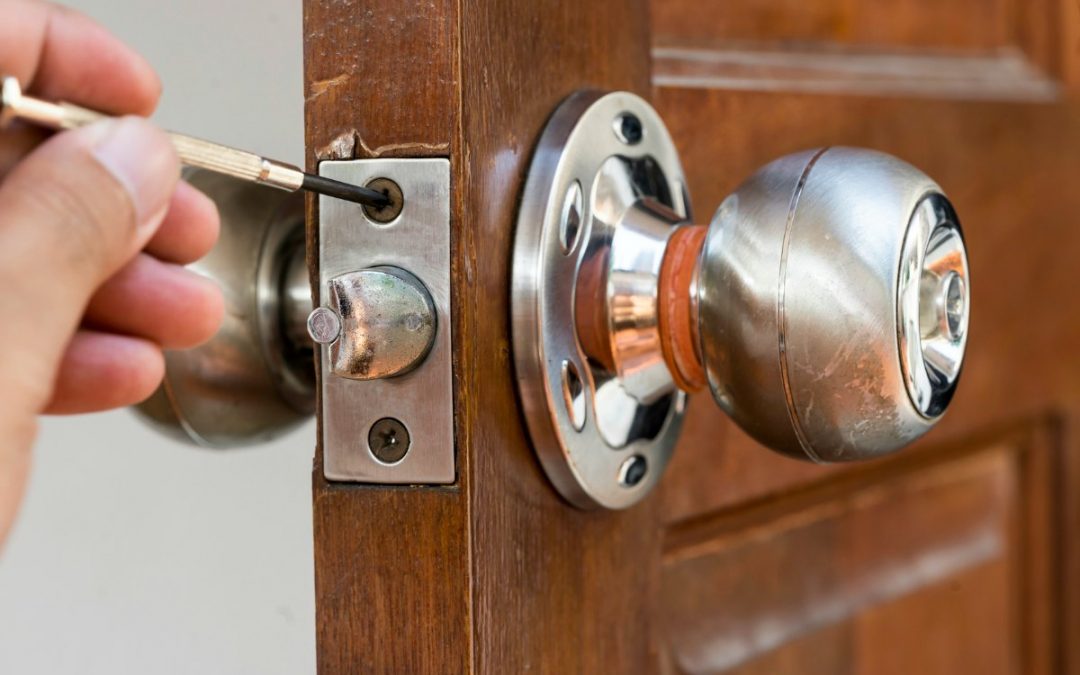If you’re an experienced poker player, you know that the game is more than just luck. It’s about strategy, skill, and reading your opponents. But even if you’ve mastered the basics, there are always ways to improve your game and gain an edge on the competition.
In jilibet888 article, we’ll explore advanced poker strategies that will take your game to the next level. One key to success in poker is learning to read your opponents. This means paying attention to their behavior, betting patterns, and body language. By doing so, you can gain insight into their hand and make better decisions about your own play.
But reading opponents is just one of the many advanced strategies that can help you win at poker. By mastering the concepts we’ll cover in this article, you’ll be able to outwit even the most skilled opponents and come out on top.
Reading Your Opponents
You need to pay close attention to your opponents’ body language and betting patterns in order to get a better read on their hand and gain an advantage at the table.
Body language tells can reveal a lot about a player’s confidence level, the strength of their hand, and their overall strategy. For example, if a player is looking down at their chips and avoiding eye contact, they may be bluffing or have a weak hand. Alternatively, if a player is making consistent eye contact and seems relaxed, they may have a strong hand.
Psychological analysis is also an important part of reading your opponents. Some players may be more aggressive while others are more passive. Understanding these tendencies can help you make better decisions about when to bluff, when to fold, and when to call.
Additionally, knowing how your opponents react to certain situations can give you an edge. For example, if you notice a player getting frustrated after losing a big hand, you may be able to use that to your advantage by making larger bets and pushing them to make mistakes.
Incorporating these strategies into your game can help you gain an edge on the competition. By paying attention to body language tells and psychological analysis, you can get a better read on your opponents and make more informed decisions at the table.
This can lead to increased profits and a more successful poker career.
Next, let’s discuss how to calculate pot odds and use them to make more profitable bets.
Calculating Pot Odds
Understanding probability is crucial to calculating pot odds in poker, as it allows you to determine the likelihood of a certain outcome occurring.
Armed with this knowledge, you can make informed betting decisions that are more likely to result in a positive outcome. However, it’s also important to know when to fold, as sometimes the odds are simply not in your favor and it’s better to cut your losses and move on to the next hand.
Understanding Probability
Knowing the odds can significantly improve your gameplay and increase your chances of success in poker. Understanding probability is essential in making informed decisions and calculating the expected value of your bets. Here are some key points to keep in mind:
- Probability is the likelihood of an event happening expressed as a percentage or a fraction.
- In poker, probability can help you determine the odds of making a particular hand or hitting a certain card on the turn or river.
- Monte Carlo simulations can help you run multiple scenarios and determine the likelihood of certain outcomes.
Expected value calculations are another important aspect of understanding probability in poker. Expected value is the average amount you can expect to win or lose on a particular bet over a long period of time.
To calculate expected value, you need to consider the probability of winning or losing and the amount you stand to win or lose.
Understanding probability and expected value calculations can give you an edge in poker by helping you make informed betting decisions. In the next section, we’ll discuss how to use this knowledge to make smarter bets and increase your chances of winning.
Making Informed Betting Decisions
Get ready to level up your game and start raking in the chips by mastering the art of calculating expected value and using probability to make informed betting decisions.
Analyzing patterns and recognizing tells are important skills, but they’re not the only factors that contribute to winning at poker. To truly gain an edge on the competition, you must understand how to make strategic bets based on the likelihood of certain outcomes.
Calculating expected value is a crucial element of making informed betting decisions. This formula takes into account the probability of winning a hand, the amount of money in the pot, and the cost of making a bet.
By weighing these factors against each other, you can determine whether a bet is worth making or not. For example, if the probability of winning a hand is high and the pot is large, it may be a good idea to make a larger bet. However, if the probability of winning is low and the pot is small, it may be better to fold and wait for a better opportunity.
Knowing When to Fold
If you’re playing a game of poker and you feel like you’re holding a losing hand, it might be time to fold and wait for a better opportunity to come your way. Knowing when to fold is a crucial aspect of any poker game, and it’s a skill that requires both pre-flop analysis and post-flop decision-making.
Before the flop, you should be assessing your hand and considering your position at the table. If you’re in an early position, for example, you may want to be more conservative with your betting, as there are still many players left to act behind you.
Once the flop is revealed, your decision to fold or continue playing will depend on a variety of factors, including the strength of your hand, the number of opponents still in the game, and the size of the pot. If you have a weak hand and your opponents are betting aggressively, it’s likely that you should fold.
On the other hand, if you have a strong hand and are confident in your ability to win, it may be worth staying in the game and seeing what develops. Knowing when to hold ’em and when to fold ’em is a key skill in poker, and it’s one that can make all the difference in your success at the table.
While folding is an important strategy, sometimes bluffing can be just as effective in gaining an edge on the competition. Let’s take a closer look at how to bluff effectively and when it’s appropriate to do so.
Bluffing Effectively
You’ll need to be a master of deception if you want to add some spice to your poker game and keep your opponents guessing when it comes to bluffing effectively.
The key to successful bluffing lies in bluffing frequency and sizing tactics. You can’t simply bluff every hand and expect to win. You need to be strategic with your bluffs, ensuring that they’re timed to perfection and that you’re not overdoing it.
Bluffing frequency is all about finding that perfect balance between bluffing too often and not bluffing enough. If you bluff too often, your opponents will catch on and start calling your bluffs, which could lead to significant losses.
On the other hand, if you never bluff, your opponents will never have to worry about your hand and will be more likely to call you when you do have a strong hand. The key is to find the right balance and bluff only when it makes sense to do so.
Bluff sizing tactics are just as important as bluffing frequency. If you’re going to bluff, you need to make sure that your bet size is appropriate. If you bet too much, you risk losing too much money if your bluff is called. If you bet too little, you’re not likely to scare your opponents into folding.
You need to find that sweet spot where your bet size is big enough to make your opponents think twice, but not so big that you’ll lose too much if they call. By mastering these two tactics, you’ll be well on your way to becoming a successful bluffer.
As you work on improving your bluffing skills, it’s important to also understand the concept of position in poker. Understanding position means knowing where you stand in relation to the dealer and how that affects your decision-making.
This will be the next topic we’ll cover, and it’s a crucial one if you want to gain an edge over your competition. By combining strong bluffing skills with a solid understanding of position, you’ll be a force to be reckoned with at the poker table.
Understanding Position
Understanding position is crucial in gaining an edge over your competition in poker.
Early, middle, and late positions each have their own advantages and disadvantages that you should be aware of.
By using your position to your advantage and adjusting your strategy accordingly, you can increase your chances of success at the poker table.
Early, Middle, and Late Positions
As you take your seat at the poker table, it’s important to understand the concept of early, middle, and late positions.
Early position strategies require a more cautious approach as you’re the first to act, meaning you have no information about the hands of other players. It’s essential to play tight in the early position, only playing premium hands like high pairs, AK, AQ, or suited connectors to avoid getting trapped in a bad situation. Moreover, you need to be willing to fold quickly if the situation isn’t in your favor.
On the other hand, late position advantages are numerous, and you can use them to your advantage. Being in the late position means you get to see how other players act before making your move. You can use this information to make more informed decisions about whether to continue playing or fold your hand.
Additionally, you can bluff more frequently in late positions, as players in earlier positions tend to be more cautious. As a result, you can use your position to steal pots and add more chips to your stack without having to show your cards.
Understanding the different positions and how to play them can give you a significant edge over your competition, giving you a better chance of winning.
Using Position to Your Advantage
Now that you understand the importance of early, middle, and late positions, it’s time to delve deeper into how you can use your position to gain an edge over your opponents.
Positional awareness is crucial in poker, as it allows you to have a range advantage over your opponents. This means that you have a better idea of what hands your opponents are likely to have based on their position at the table.
Exploiting positional weaknesses is another key strategy in using your position to your advantage. This involves positional profiling, where you analyze your opponents’ tendencies based on their position.
For example, you may notice that a player in early position likes to limp into pots with weak hands, while a player in late position raises aggressively with strong hands. By understanding these positional tendencies, you can adjust your own strategy accordingly and exploit your opponents’ weaknesses.
Moving forward, let’s explore how to adjust your strategy based on your own position at the table.
Adjusting Your Strategy Based on Position
You may think that adjusting your strategy based on your position is only for experienced players, but it’s actually a simple concept that can greatly improve your gameplay and increase your chances of winning.
Making pre-flop adjustments depending on your position can save you money and increase your chances of winning big when you have a strong hand. For example, if you’re in an early position, you should be more selective about the hands you play since you’ll have less information on what your opponents have. On the other hand, if you’re in a late position, you can play a wider range of hands since you’ll have more information on what your opponents are doing.
Post-flop adjustments are equally important and can be even more complex. When you’re in a late position and everyone checks to you, it’s an opportunity to make a continuation bet, which can often force your opponents to fold and win you the pot. However, if you’re in an early position and someone else makes a bet, you should be cautious and only call if you have a strong hand or fold if you don’t.
Additionally, if you’re in a middle position and the table is full of aggressive players, you may want to tighten up your range and only play premium hands.
By adjusting your strategy based on your position, you’ll be able to gain an edge on your competition and increase your chances of success at the table.
As you continue to learn and grow as a poker player, there are more advanced concepts to consider beyond just adjusting your strategy based on position. These concepts include reading your opponents, understanding pot odds, and mastering bluffing techniques.
By incorporating these advanced concepts into your gameplay, you’ll be able to take your skills to the next level and become a truly formidable opponent at the table.
Advanced Concepts
If you’re looking to take your game to the next level, it’s crucial to understand advanced poker concepts that can give you an edge over the competition.
One of those concepts is hand analysis. This involves analyzing the strength of your hand and the ranges of hands your opponents could have. By doing this, you can make more informed decisions and avoid costly mistakes.
Another advanced concept is table image. This refers to the way other players perceive you at the table. If you have a tight image, meaning you only play strong hands, other players are less likely to bluff you. On the other hand, if you have an aggressive image, other players may be more likely to fold to your bets or raises.
Understanding your table image and using it to your advantage can help you win more pots and make more money in the long run.
Overall, mastering advanced poker concepts takes time and practice. But by incorporating hand analysis and table image into your game, you can gain an edge over your opponents and increase your chances of winning.
Keep in mind, however, that these concepts are just a piece of the puzzle. It’s important to continue learning and adapting your strategy to stay ahead of the competition.
Conclusion
Congratulations! You’ve now learned some advanced poker strategies that will give you an edge over your competition.
By reading your opponents, you can gain valuable information about their playing style and tailor your own strategy accordingly. Calculating pot odds will help you make informed decisions about when to call or fold, and bluffing effectively can help you win big pots.
Understanding position is crucial to maximizing your profits in poker. Being in late position allows you to control the action and make more informed decisions, while being in early position can be a disadvantage.
These advanced concepts may take some time to master, but with practice and patience, you can become a skilled poker player.
As the saying goes, “practice makes perfect.” So, keep practicing these advanced strategies and you’ll be sure to see results.
Remember, poker is not just a game of luck, but also a game of skill. By implementing these advanced strategies, you can increase your chances of winning and take your game to the next level.
Good luck at the tables!





















